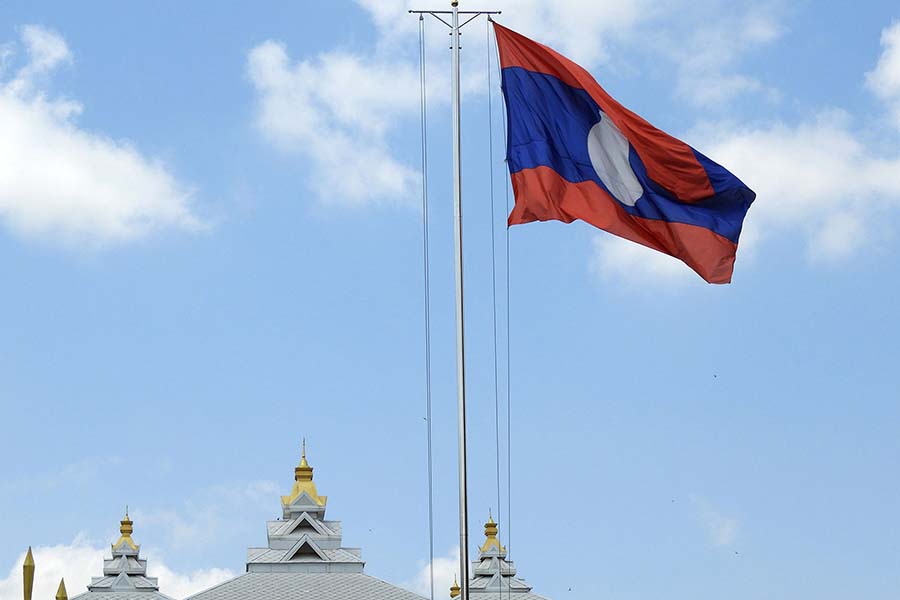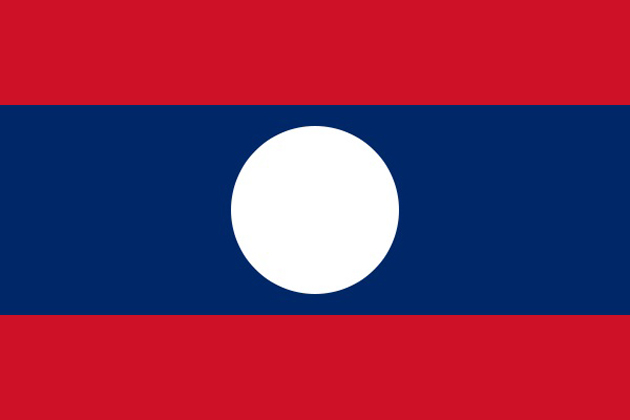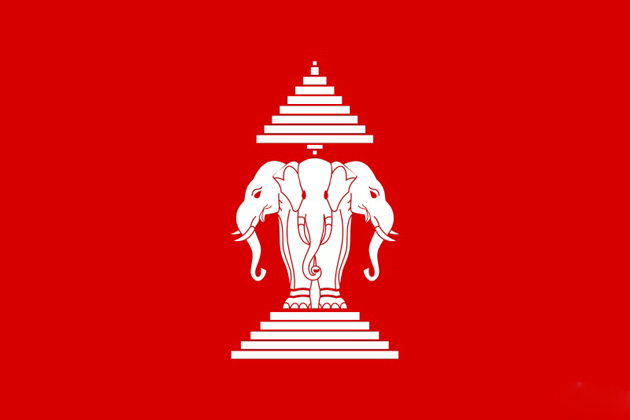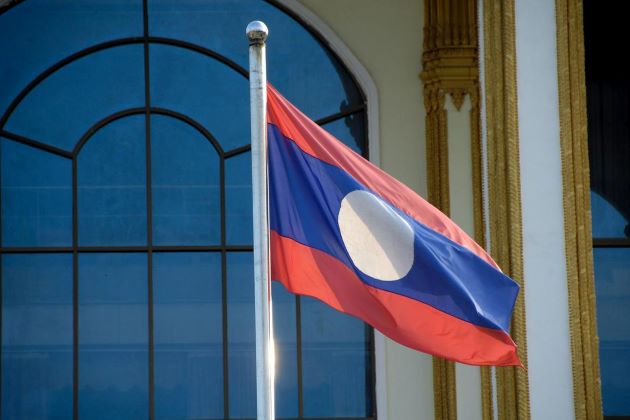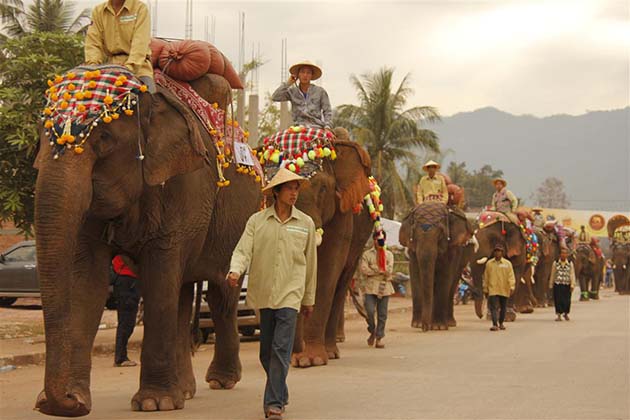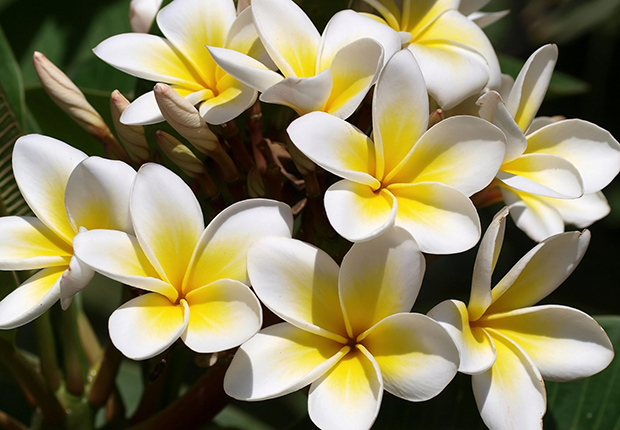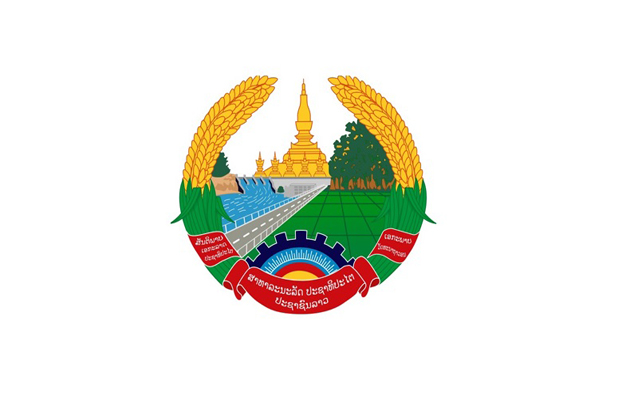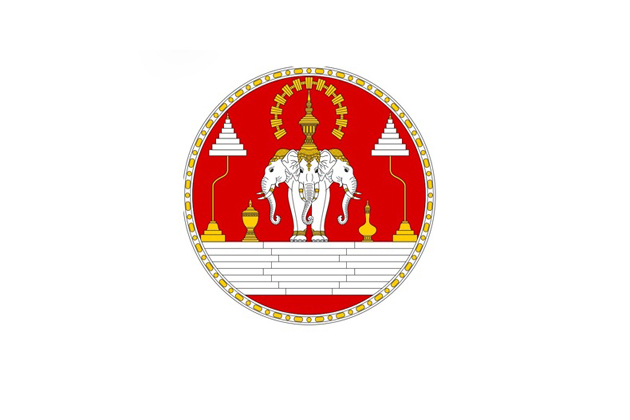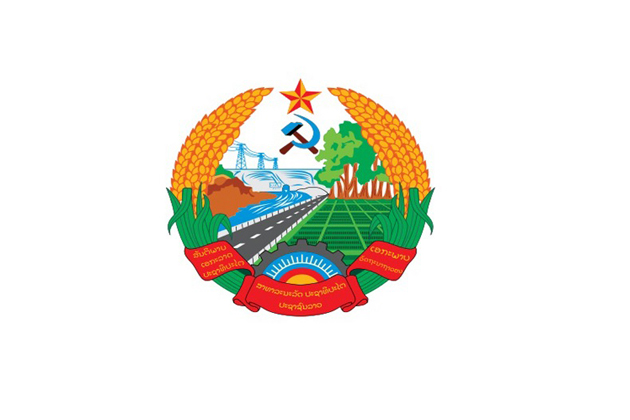Every country creates a national flag, symbols, and emblem to show their own identities and features. In Laos, they are the pride of Laotian which reflects their history, culture, and beauty of their home country. During your Laos tour, you will surely see Laos national flag, symbols, and emblem everywhere so this article will provide you with interesting information about them. Maybe you will love Laos more through this understanding.
Laos Flag - National Flag of Laos
The Laos flag is the national flag of the Laos People's Democratic Republic. The adoption of the latter was made on December 2nd, 1975. It has three horizontal bands: two red bands on the ends and a blue band in the middle whose size is equal to the two bands together. In the middle of the blue band, there is a white circle. The latter does not touch the ends of the blue band. The current flag has already been used from 1945 to 1946 by Lao Issara. It is a separatist and communist organization of the Pathet Lao who reused it afterward. After the resumption of power, this organism officially made the national flag during the proclamation of the Republic.
Meaning of Laos Flag
Commonly in several countries, the color red represents the color of bloodshed. Laos has also experienced wars and battles. At the end of this latter, the population, as well as the leaders, were touched by the bloodshed by the martyrs and the soldiers. Blue means the Mekong and the health of the country. The Mekong is a Southeast Asian river separating Thailand and Laos. The white disk in the middle of the blue band signifies the moon above the Mekong. The moon overlooking the river is the mark of peace and serenity despite the powerful flow of the river. Moreover, the Mekong holds a very important place in the history of Laos from the division of the countries that once existed.
History of Laos Flag
The flag as we know it in its present definitive form is not been the flag of Laos before. From 1952 until the fall of the Laotian monarchy that had occurred in 1975, Laos had adopted a red flag with a three-headed elephant or also known as Airavata. The elephant was mounted on a pedestal and was surmounted by a white umbrella. The three heads were the three ancient kingdoms of Vientiane, Champassak, and Luang Prabang.
Although the flag only used the red and white colors of the old flag, the latter had special meaning and still bears the marks of a belief still very popular in Laos. In fact, the old flag bore in white the drawing of a three-headed elephant mounted on a pedestal with five steps. The whole surmounted by a white parasol, symbol of the monarchy of formerly. The Kingdom of Laos was the political regime adopted by the country until 1975 but it was abolished after. The three-headed elephant is very common in Laotian belief, in other legends it could carry up to 33 heads. According to each one, it is used to put on a strong symbol of signification and meanings.
Facts of Laos National Flag
- The Laotian flag is used during holidays, dates, and milestones of the country. It is usually hoisted on the following dates:
- January 1st during the Western New Year (the new year of January 1st is very adopted in Laos even if the country adopts the Chinese calendar).
- The Chinese New Year is the transition between the end of January and the beginning of February.
- March 8th: the International Day of Women's Rights.
- April 13th to 15th: the Laos New Year.
- The month of May is dedicated to the rocket festival.
- November: That Luang holiday.
- December 2nd: the day of the national holiday.
As in most countries, the flag is also hoisted during the official ceremonies that concern the nation. It is still common to see the flag hoisted on public buildings or on Laotian houses. The colors are nevertheless present everywhere in Laos.
Even though the Laotian flag is used in its regular form of floating cloth, merchants and some lovers of small things use it as a decoration on several objects. To attract tourists local people draw the flag on mugs, t-shirts, or bags. The Laotian flag is not popularized because the people consider it as the symbol of the nation. Like most flags, it has a special meaning and is unique among many others. The choice of colors and design is not due to by chance and we must know more about Laos to understand its emblem. In history, the Mekong which holds a very large place in the country and significant colors, Laos is distinguished by a unique flag.
Laos National Symbols
Laos National Animal: the Elephant
Laos National Flower: Dok Champa (Plumeria)
Emblem of Laos - Lao National Emblem
Meaning of Laos National Emblem
Officially adopted in 1992, the emblem of Laos shows various fields of the economic life of the country. In the middle of two large ears of rice, there are forests, rice paddies, roads, dams, and a gear symbolizing the industry. In the center, there is the silhouette of That Luang of Vientiane, a national symbol. The inscription on the left means "Peace, Independence, Democracy" (Lao: ສັນ ຕິ ພາບ ເອ ກະ ລາດ ລາດ ຊາ ຊາ ຊາ ປະ ປະ ໄຕ ໄຕ ໄຕ) and on the right "Unity and Prosperity" (Lao: ເອ ກະ ພາບ ວັດ ພາບ ວັດ ຖະ ຖາ ຖາ ຖາ ວອນ).
History of Laos National Emblem
From 1949 until the revolution of 1975, the emblem of the Kingdom of Laos resembled the symbol of the royal family, with the white elephant with three heads Erawan (mount of the god Indra), framed by two parasols.
From 1975 to 1992, it was a sickle, a hammer, and a star, international symbols of communism, since Laos was, via Vietnam, a satellite of the Union of Socialist Republics Soviet.

